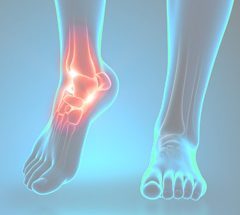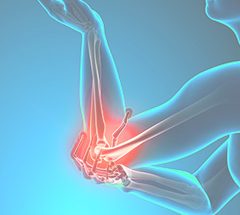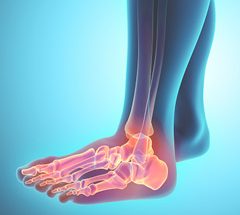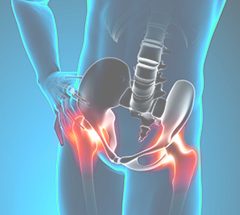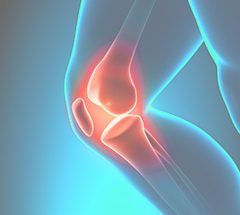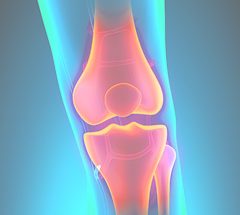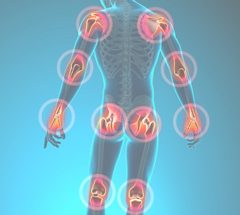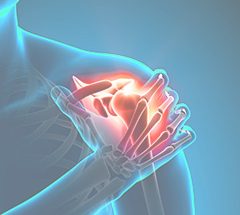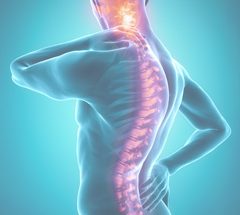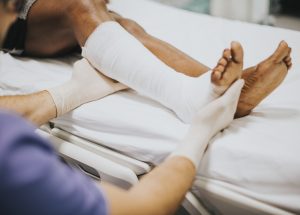Lumbar Microdiscectomy
Learn about what is involved with a minimally invasive microdiscectomy procedure for a slipped disc or herniated disc in your lower back.
An intervertebral disc is a kidney-shaped structure located between each pair of vertebrae. They are designed to redistribute forces incurred by the spinal column when sitting, standing or lifting.
The intervertebral disc is composed of two types of cartilage. There is an inner semi-liquid cartilage (nucleus pulposus) surrounded by several layers of fibrous rings of cartilage (annulus fibrosis). Together they form a self-contained unit.
The intervertebral disc is strong and stable. When an object is lifted, the force is transmitted directly onto the semi-liquid center and then redistributed radially to the outer fibrous rings. As the force is redistributed, the rings resist deformation. It is this combination that enables the disc to act like a shock absorber.
What causes a disc to rupture or herniate?
Repetitive bending and twisting or trauma to the back can create a shear stress across the disc. Over time this stress may cause the outer fibrous rings to break down, one layer at a time. Gradually, the semi-liquid center of the disc will work its way through the outer ring and push on a nerve. This is known as a ruptured, slipped or herniated disc.
There are five discs in your lower back, located between each pair of vertebrae from L1 to S1. The two lowest discs, L4-5 and L5-S1 most commonly rupture. Pressure on a nerve may cause pain, numbness, weakness, tingling, or loss of a reflex. The distribution of symptoms varies depending on which nerve root is involved.
What are the main reasons for performing a microdiscectomy?
There are some extreme circumstances, such as loss of bowel and bladder function, when immediate surgery is necessary. However, most disc ruptures resolve gradually without surgical intervention. The most common reason to have surgery is to alleviate pain, which has not improved within a reasonable time period. Many people would like to be more active than their pain allows, and this often persuades them to have surgery.
Research shows that after one year of observation, patients who have chosen surgery have significantly better results than patients treated conservatively. However, after follow-up periods longer than two years, both the surgical and non-surgical groups have about the same amount of improvement.
If your pain is mild or moderately tolerable, we do not recommend you proceed with surgery. We also feel that numbness, tingling or the loss of a reflex is not sufficient to indicate surgery. There does not appear to be a significant difference in the results of patients with muscle weakness when treated surgically versus those treated non-surgically. Therefore, muscle weakness that is not associated with leg pain is usually treated non-operatively as the muscle usually regains strength. If the weakness is profound or progressive surgery is probably indicated.
It is important to realize that a microdiscectomy is quite effective in relieving pain in the buttocks or pain that travels down the leg; however, it is not particularly effective in relieving back pain. Back pain is typically treated with aggressive rehabilitation. The primary reason to proceed with surgery is to relieve pain in the buttocks or leg sooner than would be accomplished without surgery.
What is the chance of a successful outcome?
A microdiscectomy is 85% to 95% successful in relieving pain in the buttocks and leg. Pain relief is typically quite rapid, although in specific instances, it may take six to eight weeks for the nerve to calm down. If a nerve has been pinched for a long time, the success rate is rarely 100% as there is usually some residual mild tingling, weakness, or pain, all of which are fairly tolerable.
What are the limitations of the procedure?
Surgery is intended only to remove pressure from a pinched nerve. When a disc ruptures, a hole is created in the outer ring. During surgery, your surgeon may open this hole to remove any loose material; however, it is not possible to repair the hole. Even though surgery is effective in alleviating buttock and leg pain, you are left with a disc that will have a permanent weakness in the ring. Care has to be taken to prevent undue stress to the disc indefinitely, for fear of re-herniation.
What happens during surgery?
During surgery, you are carefully positioned on a padded frame in a flexed posture, which allows the space between your vertebrae to be opened as widely as possible. A small one-half inch incision is made on your back over the operative disc. A needle is inserted through this incision and onto your spine. A series of dilators are placed so as to spread the muscle tissue rather than cut it.
Once the largest dilator has been placed, a one-inch-diameter, tube-shaped retractor is inserted over the last dilator. The needle and dilators are then removed and the tube retractor is attached to a clamp to secure it in place. The surgery is then performed through this tube with the assistance of a microscope. A small amount of bone is trimmed from the lamina to create a space between the two vertebrae.
Since only a small amount of bone is removed, no instability results from this. A ligament between the vertebrae is removed in order to gain access to the disc. This ligament can be removed with no deleterious consequences. Utilizing a microscope, the nerve is visualized and then retracted towards the middle of the spine. We then remove any loose fragments or material within the disc space that is pressing on the nerve(s).
What is the hospital or surgical center stay like?
Prior to surgery, the nurses and doctors at the hospital will ask you questions regarding your medical history. Please bring a list of medications that you are currently taking. You will wait in the holding area of the operating room for about 30 minutes prior to surgery. This is where you will meet your anesthesiologist (doctor who will put you to sleep and monitor you during the procedure) and have your IV placed.
After surgery you will wake up in the recovery room where you will remain for about one to two hours. After surgery many patients will have significantly less leg pain; however, your back will be quite sore. Sometimes it can take one to two weeks for some patients to have significant relief of their leg symptoms if they had more severe nerve compression prior to surgery. Even though the size of the incision is small (about half an inch), pain should be expected as your muscles were dilated for the procedure. Appropriate medications are provided to reduce your pain. On most occasions this procedure is performed as an outpatient procedure. Please ask your doctor if this situation is appropriate in your case.
We have found that there is a lower incidence of complications if you resume activity early. If you are discharged to home following your procedure, a period of light activity is recommended. Extensive travel, frequent lifting, and repetitive bending are to be avoided until your pain subsides in one to two weeks.
Due to the combination of anesthesia and pain medication, you may feel nauseated and have difficulty urinating immediately after surgery. Some patients require a catheter in their bladder to enable them to urinate. You may go home once your pain can be controlled on pills.
What am I allowed to do when I go home?
We generally advise people to take it easy for the first couple of days. You will be able to take care of yourself, go up and down stairs, and move around based on your own comfort level. For the first six weeks you should not put any unnecessary stress on your back. During the first few weeks following discharge, we encourage you to begin walking for one half hour to two hours each day in divided intervals. You should walk slowly enough so pain does not flare up in your leg. The nerve is generally quite sensitive after surgery and intermittent leg pain similar to your pre-surgical pain is common. The pain should calm down quickly if you decrease your activity level.
At the six-week mark, you may be enrolled in a structured physical therapy program to include core strengthening and neutral spine exercises. You will also be allowed to begin low-impact aerobic activities (e.g., elliptical training, recumbent bicycling, swimming, etc.) at this time point. Three months after surgery, you can begin higher impact aerobic activities such as running, jumping, and non-contact sports. Six months after surgery, you will be free to participate in any physical activity (including contact sports and activities) without restriction.
When can I return to work?
Each situation is unique and should be discussed with your physician prior to surgery. In general, most patients return to work about one to two weeks after a microdiscectomy.
When can I start rehabilitation?
During the first four to six weeks after surgery the nerve tends to be very sensitive. We do not recommend physical therapy in the beginning of your recovery cycle because it may cause the nerve root to flare up.
Repetitive bending, twisting, and sitting are the most common causes of a disc re-herniation. Therefore, we believe in preventing future problems by teaching you how to properly care for your back. A back education program includes developing proper posture and body mechanics, a strengthening and stretching program, and an aerobic exercise program. You should be aware that a long-term rehabilitation program is an important part of your overall recovery process. Each physician will prescribe a rehabilitation program based on your specific needs.
What is your overall philosophy regarding spine surgery?
We recommend you have surgery if your symptoms are disruptive to your quality of life and there is a specific anatomic lesion that can be corrected. However, if your symptoms are tolerable or we cannot find a specific structural problem causing your pain, surgery is not a good idea. It is our role to define whether or not there is a structural lesion that can be corrected. However, only you can determine if the pain and discomfort you are experiencing is worth the risk of surgery.





